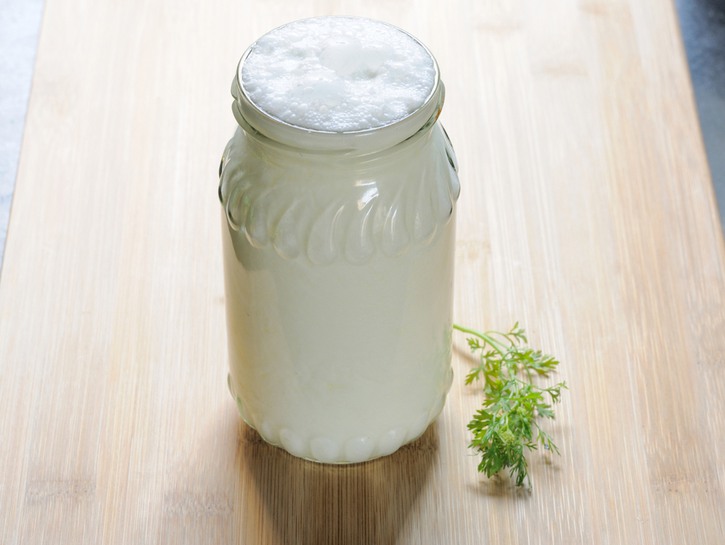One day you may be innocently following the instructions of a recipe, and look down in horror to see that the ingredients list calls for the obscure “buttermilk”, as opposed to the regular 2% you know you have in the fridge. You start to panic… you’re pretty sure you don’t have this niche dairy product lying around. But don’t have a cow! As long as you’ve got something to sour up that milk you already have, you’re going to be just fine.
Buttermilk essentially tastes like a more tart, acidic version of standard milk, so it’s no surprise lemon juice and vinegar will come in handy here.

images72/Shutterstock
What You’ll Need
- 1 cup of milk (any milk will work, though whole milk is recommended for best baking results)
- 1 tablespoon of lemon juice OR white vinegar
Step #1
Combine milk and 1 tablespoon of lemon juice OR white vinegar, and stir.
Step #2
Allow to rest at room temperature for 10 minutes until the milk begins to curdle and becomes acidic.

Testbild/Shutterstock
What Is Buttermilk?
Back in the day, buttermilk was the word for the sour liquid you’d find leftover after cow’s cream was churned to butter. While milk was being left out to separate the cream, a bacteria that turns milk sugars to lactic acid would naturally start fermenting it, producing a more tart, sour taste than standard milk.
These days, commercially available buttermilk is low-fat or non-fat milk that has been pasteurized and acidified with bacteria cultures, in a way similar to yogurt.
Old-fashioned buttermilk tends to be lighter, more free-flowing, and traditionally features small flecks of floating butter, while store-bought buttermilk is usually more thick and viscous.
What Is It Used For?
You can drink buttermilk straight up, but it’s often used for cooking and baking. Buttermilk is also popular for marinating meat, particularly chicken and pork. The lactic acid in buttermilk helps tenderize and lock moisture into meat; plus, buttermilk has a reputation for making meat more flavorful after a good soak.
